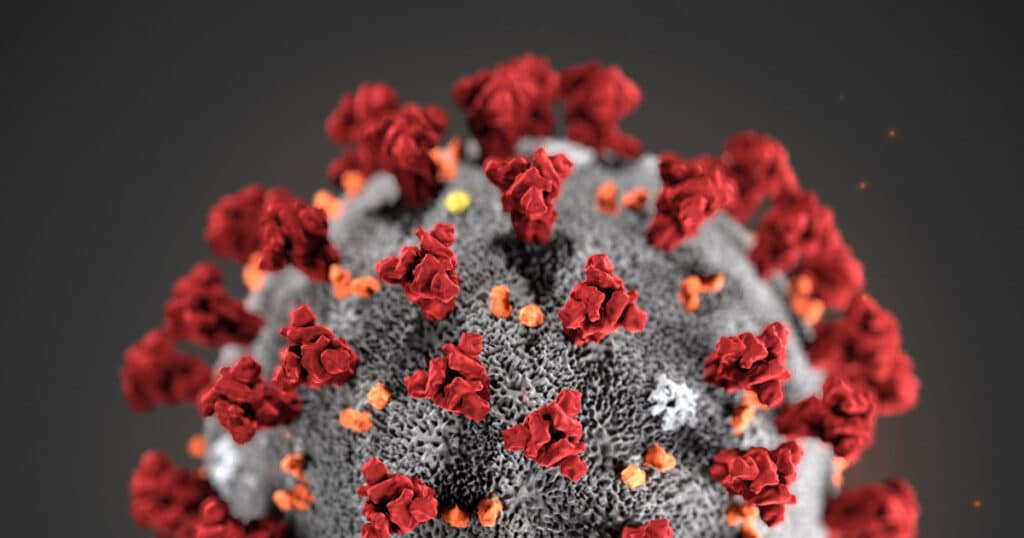
Covid Lab-Leak and the Attack on Common Sense
Most of us learned about the virus we now call SARS-CoV-2 just over three years ago, on January 6, 2020. Reports of a fast-spreading respiratory infection that was hospitalizing and killing people in the southern Chinese city of Wuhan quickly became the dominant news story, and by January 20 the first domestic case was registered in Washington State. We were told, first, that coronaviruses of this kind were known to spread among bat populations in China, and that the virus likely leapt from bat to human at a live-animal market in Wuhan. The pangolin was the likely culprit. (Three years later, it’s the raccoon-dog.) But all the while, lurking in plain sight, was the Wuhan Institute of Virology, a biosafety-level 4 lab with funding from the United States’ National Institutes of Health (NIH) that openly engages in coronavirus research. It felt only natural to ask: Could this virus have originated in a lab?
Qualified people asked this question from the beginning. Asking it is not the same as asking whether Covid-19 was engineered by bad actors, state or otherwise, with terroristic intent. No one worth paying attention to was talking about bioterrorism. What many scientists and journalists were asking about instead was the increasingly mainstream theory that this novel coronavirus did not, in fact, make first contact with humans via an animal (the zoonotic origin theory). They wondered, rather, whether it was the product of one or another virus research method—“gain of function” being the key term here, referring to a set of practices ranging from benign to necessary to highly risky—and had subsequently “leaked” out of the Wuhan Institute of Virology and into the civilian world, unintentionally.
Today, both the U.S. Department of Energy and the FBI endorse the lab-origin position as the most likely. But efforts to discredit the theory as racist and conspiratorial in 2020 and 2021 were swift, unequivocal, and bewildering.
Bret Weinstein, the evolutionary biologist whose dramatic pillorying by a student mob at Evergreen State in 2017 sparked broader conversations about cancellations on university campuses, was among the first to observe publicly that the SARS2 genome contained something called a furin cleavage site, and that this particular mutation appeared to indicate human interference in the virus’s genetic sequence. The furin site was known to enhance the virus’s infectiousness and quicken its spread in human tissue; it had never been observed in similar, naturally occurring coronaviruses.
Arkansas senator Tom Cotton was also early to mention the possibility of a lab leak; the Atlantic Council responded by dismissing the senator’s statements as evidence of a growing “infodemic” of false claims about Covid.
Nicholas Wade, a former science writer at the New York Times, wrote a remarkable essay for the Bulletin of the Atomic Scientists in 2021 which details not only the scientific plausibility of the lab-leak theory but the connections between the Wuhan lab and the nonprofit EcoHealth Alliance. Wade points out that EcoHealth, with money from the NIH, funded coronavirus research at the Wuhan Institute of Virology. EcoHealth president Peter Daszak was the lead author of a February 2020 letter in the Lancet, signed by 27 scientists, which unequivocally denounced lab-origin speculation as not only incorrect but conspiracy theorizing. (If the lab-leak theory were true, Daszak would potentially be implicated.) As recently as last month, Democratic congressman Raul Ruiz attempted to remove Wade as a witness in a Covid origin hearing, accusing him of espousing racist and white supremacist views.
Meantime, then-president Donald Trump unhelpfully referred to Covid as the “China virus,” a rhetorical move that achieved little more than to offer mainstream liberal media a blank check to write off further discussion of the lab-origin hypothesis as racist drivel. Apoorva Mandavilli at the New York Times mused on Twitter that the lab-leak theory had “racist roots,” and that it was therefore time to stop talking about it. To believe the mainstream media, it was somehow more racist to be skeptical of an internationally funded research institution than it was to place blame on the Chinese cultural practice of wet-market trading.
As has become common today, suppression of the story became the story. Consider the ongoing discourse around Matt Taibbi’s Twitter Files reporting, which has produced a number of breaking stories but is persistently mired in slander to the degree that public interest has shifted away from the content of Taibbi’s reporting and onto the blatant efforts to dismiss it. In the case of Covid’s origins, what should have been a relatively dispassionate conversation has become heated largely because of how powerful individuals and institutions have tried to quash any serious discussion of the lab-leak theory.
We know that our public-health officials were paying attention to the lab-leak possibility as early as the spring of 2020. Recently obtained emails between Anthony Fauci and prominent virologists and epidemiologists show that, despite the lack of consensus about the scientific evidence, a paper in Nature Medicine was rushed to publication in order to preempt the perception that the U.S. government had been caught flat-footed on the question of the virus’s origin. Soon afterward, and despite expressing private uncertainty on the matter, Fauci announced at an April 2020 press conference that he endorsed the paper’s findings. Titled “On the proximate origin of SARS-CoV-2,” the paper claims that “[their] analyses clearly show that SARS-CoV-2 is not a laboratory construct.” It is now one of the most-read scientific papers of all time, with 5.7 million reads and over 2,000 media citations. After the April 2020 press conference, outlets such as ABC News ran snide headlines, such as, “Sorry, conspiracy theorists. Study concludes COVID-19 ‘is not a laboratory construct’.”
The New York Times’s David Wallace-Wells—along with Fauci, for that matter—is right to argue that an indisputable resolution to the Covid-origin question may be not only unattainable but also unnecessary to future pandemic preparedness. What is necessary, however, is a free-speech atmosphere in which Americans are not routinely cowed by elite media institutions into questioning whether they are racist, conspiratorial, or ignorant when they ask rational questions about observable realities.
Aaron Sibarium, soon after the Department of Energy leak, phrased the situation well with a thought experiment on Twitter: “Suppose you are investigating a murder. According to the forensic analysis, there is a 99% chance the exit wound came from a pistol. But the only gun at the scene—and you’ve searched very thoroughly—is an AR-15. This is roughly the epistemic dilemma of the lab leak debate.”
While the 99% figure may be overstated for effect, Sibarium is observing that the strong genetic case for a zoonotic origin has led many serious scientists to conclude that Covid came from an animal. This is still a theory, however—and it’s still in competition with the empirical reality of the Wuhan Institute of Virology, the nature of the institute’s work and its proximity to the epicenter of the outbreak, and even the scientific evidence that favors a lab leak. To date, however, merely observing this possibility continues to prompt scorn from outlets ranging from The New York Times and the Washington Post to the Lancet and Nature, which condemn views held by serious people, such as Wade and Weinstein, as beneath consideration.
This denialism does more than stifle open debate. It erodes our shared empirical reality and shunts significant segments of the population into conversational spaces that will actually breed toxic conspiracy theorizing. That COVID-19 might have come from a lab was from the beginning an intuitive, even common-sense, hypothesis; in rejecting it out of hand and stigmatizing those who proposed it, many of our leading institutions have degraded our future ability to formulate a coherent public response to emergencies.
Encouraging signs have emerged, however. Facebook has now reversed its earlier decision to censor posts discussing a lab origin, and Twitter, under Elon Musk, is opening channels of conversation about Covid that have long been closed. News media is reengaging with the lab-origin theory (even by stealth editing old stories, in some cases) and Congress is conducting investigations. It would be naïve to assume, though, that millions of Americans will forget how their rational questions were dismissed. And it is best that they don’t forget, even as the public conversation of Covid’s origin proceeds, albeit tentatively, in the way it should have done three years ago.
This article was originally published by RealClearBooks and made available via RealClearWire.



